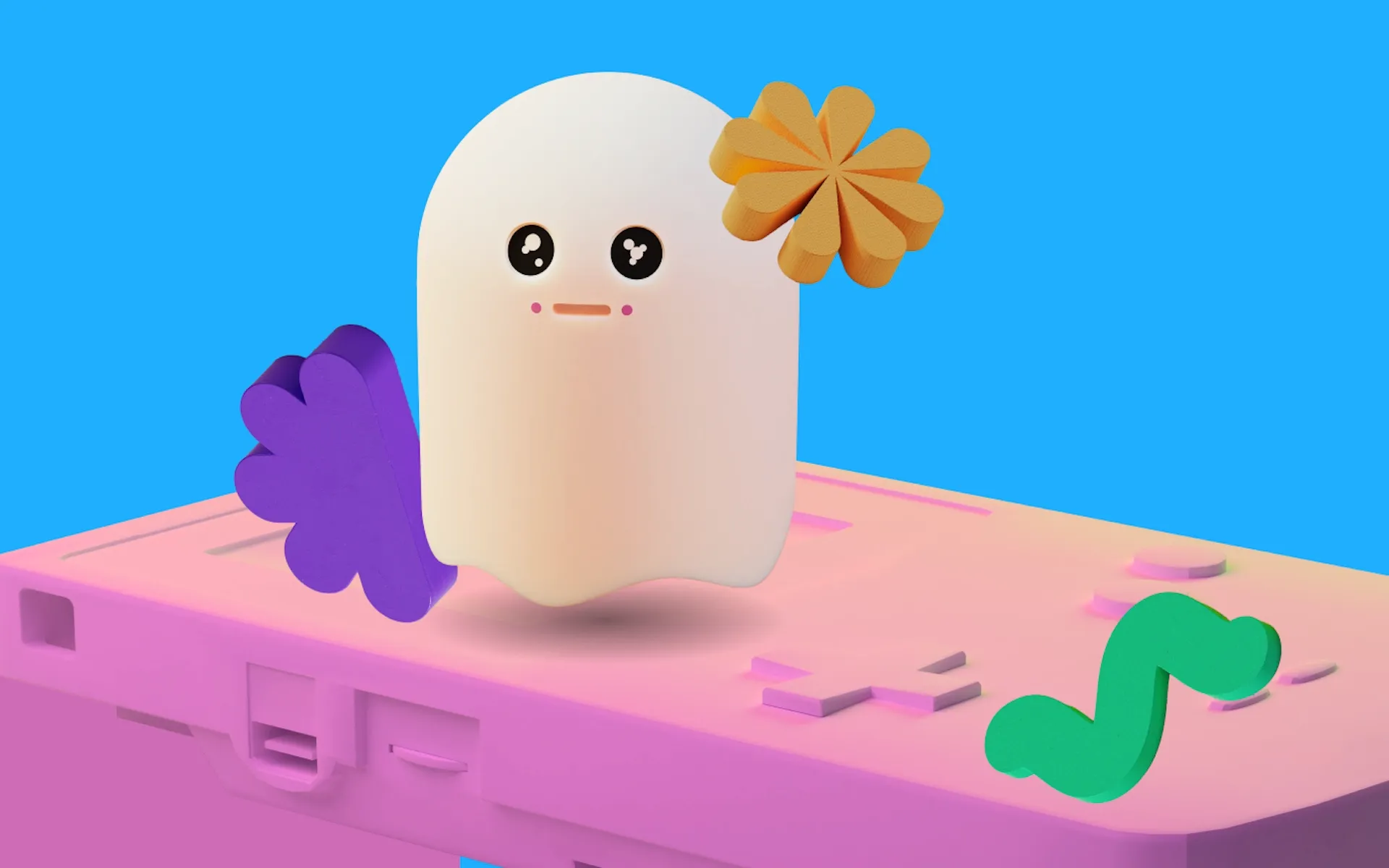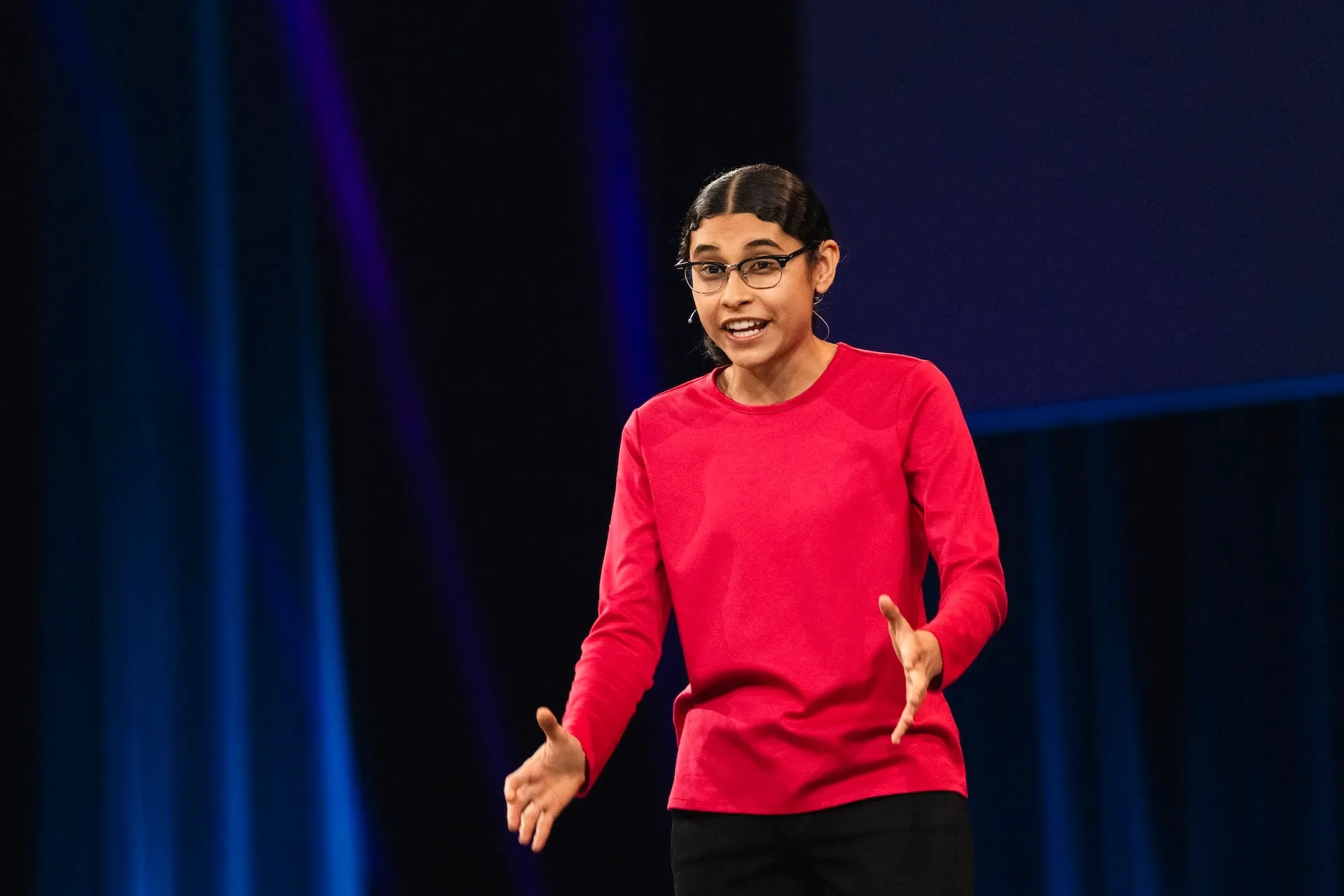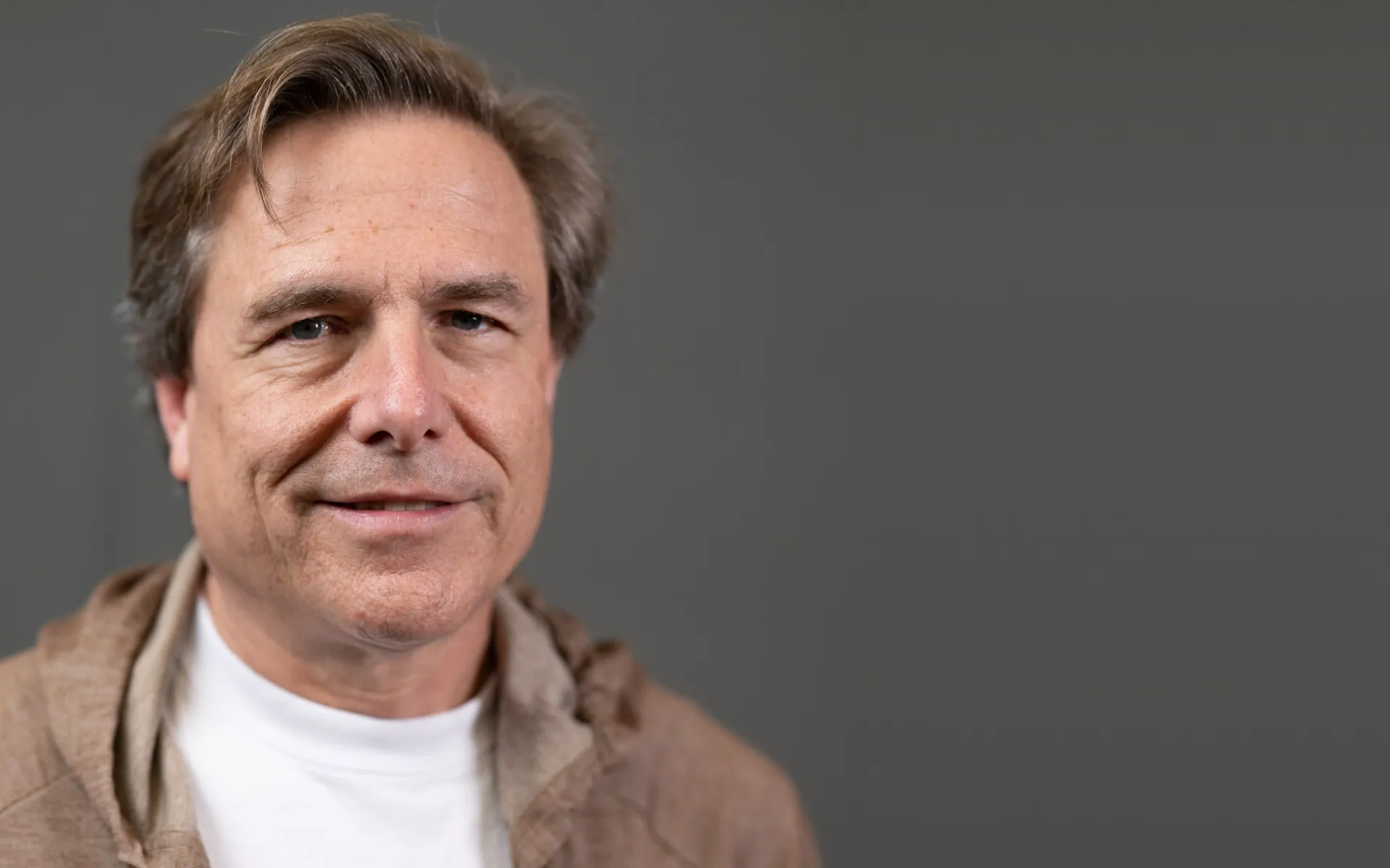What do creators really think about AI and the future of content?
Epidemic Sound recently released The Future of the Creator Economy Report 2025. Dig into some of our featured creators’ thoughts below.

The age of the creator is now — at least, according to Epidemic Sound’s research. The Future of the Creator Economy Report, now in its third year, surveyed 3,000 professional content creators across the UK and US.
And what a report it is. Packed with findings on everything from monetization to music, the research shines a light on one core theme: creators want more control. Over their channels, audience, time, technology — they demand to be masters of their own destinies. In a world where AI tools are commonplace, that means they’ve had to mature. Adapt. Evolve.
It’s an eye-opening read, and there’s real sentiment behind the stats. We sat down with several high-profile content creators to explore the impact of AI, how they’ve managed to thrive, and what they think is next for the creator economy.
How can creators diversify?
Our report shows that more and more creators want to expand and diversify their content across new platforms and formats. In fact, 98% of them have explicit creative or business goals for the coming 12 months.
Why?
To protect them against platform volatility and algorithm changes.
More creators are planning to launch their own businesses in the upcoming years, too — it’s anyone’s game to win. We chatted with Jenny Hoyos, a content creator, CEO, and YouTube sensation with more than 9 million subscribers, to untangle the logistics.

Can you share examples of how you have diversified your content?
Jenny Hoyos: “One of the most exciting parts of being a creator today is how many ways there are to grow — not just on platforms, but beyond them.
“When I first got into content creation, I didn’t have an audience or any following. So instead of monetizing through my own content, I supported other creators behind the scenes: brainstorming video ideas, editing, and helping brands by creating user-generated content to grow their pages. I even created social media content for local businesses — it was all about building skills and learning what works on social media.
“This helped refine my content creation skills, where I not only learned how to make good videos, but content that takes off on social media. As my own audience started to grow, I was finally able to monetize through YouTube AdSense, which helped me cover production and team costs. I knew early on that if I wanted to build something bigger and longer-term, I had to diversify my income and think like a business owner.
“One of my favorite ways to monetize now is through sponsored posts, where I partner with brands to organically feature their product or message in a video on my own channel. I love this model because it allows me to focus on content, rather than splitting my attention on another venture like creating a product.
”I also launched merch using a print-on-demand service, which was the perfect low-risk entry into physical products. There were no upfront costs or inventory — just my creativity. It gave me a way to test what resonates with my audience without any financial pressure.
“Another major part of my business today is education and consulting. I created a $99 digital product that walks creators through my full process for making viral videos. I bundled it with a $210 bonus program, which includes lifetime access to advanced lessons and my private community of 600+ creators.
“It’s become such a supportive and collaborative space where creators at all stages can share wins, ask questions, and grow together. I also offer one-on-one coaching sessions, where I do personalized audits to help creators figure out what’s working, what’s not, and how to improve!”
What advice would you give creators looking to diversify their income?
JH: “If I had to give advice to creators looking to diversify their income, I’d say: ‘He that observes the wind will not sow, and he who regards the clouds will not reap.’ (Ecclesiastes 11:4)
“In other words: if you keep waiting for the perfect moment, you’ll never start. So if you don’t have an audience, leverage your skill sets and start with what you’re best at — like how I edited content for other creators.
And if you do have an audience, think of how you can serve them using the skills you have, like how Emma Chamberlain launched her own iced coffee brand.”
How are you looking to expand your business?
JH: “I’m dreaming big! I’d love to become a brand ambassador for a few companies I truly believe in. That means playing a major role in their marketing as both an influencer and consultant — because that’s what it means to be a creator.
“Beyond brand work, I’m looking to develop scripted digital content. I’ve always loved storytelling — especially comedy — and I’m currently developing a show that I hope to pitch to streamers or studios. It’s a whole new world, and I’m excited to explore it!”
How do you maintain your creative spark while diversifying across platforms and formats?
JH: “The hardest part of diversifying is staying creatively inspired. I’ve managed that by giving myself the freedom to experiment. My main YouTube channel is more structured and growth-driven, while my second channel — which I also repost to TikTok and Instagram — is my creative playground.
@jennyhoyosfr why bc i’d make the MOST of this scenario 😭
♬ original sound - Jenny Hoyos
“I post whatever feels fun, without worrying if it’s ‘strategic.’ Ironically, that’s led to even more brands reaching out, because it shows the unfiltered side of who I am.
“My philosophy is simple: if you’re not enjoying the process, your audience can tell. And if you’re getting bored of your content, they probably are, too. Staying creatively fulfilled isn’t just good for the soul — it’s good for the business!”
Are AI tools really worth it?
Our report shows that 91% of creators use AI during the content creation process — those numbers are too high to ignore. Chris Do, an Emmy award-winning art director and co-founder of education platform The Futur, lays it all out on the table.
What do you most value about using AI tools in your content creation process, and are there any tools you’re specifically excited about?
Chris Do: “I like that AI can help me with:
- Research and brainstorming — user profiles, customer journey mapping, and creative briefs
- Organizing and sorting
- Summary and analysis — sales calls, interviews, talks, and content
- Generative design — expanding canvas, removing unwanted objects, masking, texture maps, illustrations, and photos.
“For creating assets, I like starting with Midjourney, and then modifying using Adobe Firefly. If I need to scale up assets, I use Leonardo. For editing, Photoshop Beta. For general writing, I bounce between ChatGPT and Claude.”
Which new formats, technologies, and platforms are you most excited to experiment with this year?
CD: “Text-to-video prompting, photos to floorpans and back, and general AI for cleanup for still and moving images. Some of the new ChatGPT features that generate ad campaigns based on a single image look exciting, too.
“I think this year, it’ll be about better outputs based on more natural language. More refinement and editing features, so that we can dial in exactly what we envision.”
What advice would you give to creators when it comes to using AI?
CD: “Don’t have a default reaction to AI or any other new emerging tool or technology. You owe it to yourself to try, learn, and adapt new methodologies into your creative work process.
“AI can not only remove mundane and time-consuming tasks, but if leveraged correctly, can be an amazing assistant or brainstorming partner. You can test new ideas quickly, or bash two ideas into something novel.”
How do you expect AI to continue shaping and influencing the content creation landscape, and how do you plan to adapt to these changes?
CD: “I think the tools will become easier to use with higher-quality output. There will be the initial wave of ‘shiny’ work that floods the internet, but soon people will recognize the AI sauce on imagery and yearn for something more refined and thoughtful.
“I think we’ll have agents that we can build, which will easily integrate with multiple tools to automate and speed up time-consuming tasks. Voice will play a bigger role as keyboards become more of an antiquated input device.
“I can see how AI tools will be used more in classroom and training environments. Custom AI teaching assistants can be deployed to help neurodivergent students learn in a way that’s best suited for them.
“Lastly, I think there will be a lot of new voices who enter the filmmaking space that will be powered by AI screenwriters, cinematographers, and visual effects artists.
"The old guard, who control which films are produced and who gets to direct them, will slide towards a more democratized model where anyone with a good idea can produce a good ‘proof of concept’ trailer.”
What does the future of the creator economy look like?
Creative control doesn’t come without hardships — 96% of creators admit to facing challenges during the content creation process. Coupled with the AI tools we discussed earlier, market saturation, and more, what does the future of the creator economy actually look like?
We rounded off our who’s-who with Jim Louderback, a creator economy expert and former CEO of VidCon. If you like what you read, sign up for his Inside the Creator Economy newsletter, which includes a 24-page report on AI for creators and publishers.

What advice would you give to creators when it comes to using AI to succeed in the creator economy?
Jim Louderbeck: “Just as creators disrupted traditional media, AI is poised to disrupt creators — but not all of them. AI-based production, editing, and translation tools will let another billion creators bloom, but will enable billions of AI-generated videos to bloom, too.
“What to do? First, become a student of AI’s capabilities. Try out different tools to accelerate your creativity and your production, but don’t stop there.
“Consider creating a digital twin of yourself. Begin to use it to create content — with full disclosure, of course — and then get ready for the agentic you in the future. Along with embracing what AI can do to accelerate and replicate you, think about what makes you truly human, and what you can do that AI can’t – like going live, making funny flubs on camera, doing the unexpected.
“And finally, embrace the opportunity to leverage the biggest change in search optimization since Google started including YouTube videos in its results.”
How do you think AI will continue to shape the content creation landscape?
JL: “The rise of GEO — Generative Engine Search — offers tremendous opportunity for creators to become trusted sources for AI-powered search queries. Even Google knows that traditional search is dying, and AI-based queries offer a brand-new way for you to get discovered and viewed.
“This isn’t all something happening down the road. It’s here today, in 2025. AI tools, agents, GEO, and a flood of slop will all be part of the biggest stories of 2025. No time like the present to start leaning in!”
Want to learn more? Dive into The Future of the Creator Economy Report 2025 below, and plan for the future today.
Related posts:

